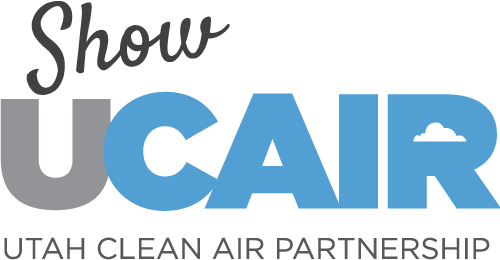After a couple months off during the COVID-19 pandemic, UCAIR resumed holding our monthly partners meetings. This was our first foray into the world of large-scale online meetings, and it was a success. It was nice to be ‘together’ virtually and continue the air quality conversation. At this virtual meeting we heard from Bryce Bird from the Division of Air Quality about how DAQ is adapting to current circumstances and COVID’s impact on air quality. We then turned the time over to Kerry Kelly from the University of Utah, who presented some of her research on wood burning trends along the Wasatch Front.
COVID-19 and Air Quality – Bryce Bird, Executive Director, Utah Division of Air Quality
In March, the Department of Environmental Quality was given guidance which has shaped their operations during the COVID-19 pandemic. This guidance is based on the understanding that environmental regulations and controls are an essential function and should remain in operation. The Division of air Quality continues regular day to day operations with approximately 90% of staff working remotely. Compliance inspections and reviews continue to be performed, digitally when possible, and with appropriate PPE and social distancing measures. Permits are received and processed electronically, including an electronic signature. During this time, regulated entities are not authorized to violate environmental laws and enforcement measures will be exercised when justified. Additionally, some DAQ staff are using their language skills to assist the Department of Health conduct contact tracing.
In Utah, March and April are typically cleanest time of the year in terms of air quality. DAQ’s sensors are very accurate at high values but at low values they are less sensitive. Currently, local pollution levels are at levels near the limit of detection of air monitoring instruments. However, in on a larger scale we are seeing that global emissions are reduced. DAQ staff is working with numerous community partners evaluate the benefits to implement trip reduction programs to benefit air quality in the future. The daily levels of PM 2.5 levels have been about 25% lower during this crisis. In part because there has been a 40% reduction in overall traffic. Both NOx and VOC emissions, the principal ingredients of the PM 2.5 in our air, have also gone down. Based on collected data, there has been a 38% reduction in NOx emissions and a 37% reduction in VOC emissions from vehicles in March and April.
Wood Burning Trends on Utah’s Wasatch Front – Kerry Kelly, University of Utah
The contribution to PM2.5 levels from wood burning is declining and is a statistically significant trend. From 2007 to 2017 there has been a significant drop in wood burning at all locations where samples were collected. Winter to winter, meteorology varies so researchers completed a comparison with a normalized heat deficit, which is a way to normalize looking at an inversion. Even factoring in a heat deficit, the downward trend in wood burning emissions remains. This evidence would suggest that the significant efforts directed at discontinuing wood burning have been effective. However, this does not mean that wood burning is completely gone. Even on days when there are mandatory actions, there is still evidence of wood burning. Commercial woodburning by restaurants and other businesses, contributes to PM2.5levels and presents opportunities for communication, education, and hopefully voluntary reduction. You can find more information about indicators of wood burning by going to the dashboard on the University of Utah’s website.
PARTNER ROUNDTABLE
Following the presentation, partners shared what projects and initiatives they are currently working on. These included:
Steve Bergstrom, Intermountain Healthcare- Steve is retiring at the end of May. Glenn Garrick will be taking his position and they will be doing virtual introductions before Steve retires.
Michelle Brown, Dept. of Administrative Services- The original goal was to have2,055 employees transition to telework. COVID-19 has allowed the state to quickly expand the program, 8,500 employees are currently working from home. DAS staff are working on determining what a ‘new normal’ will look like and how to integrate teleworking as an emissions reduction strategy during periods of elevated pollution.
Angelo Papastamos, UDOT- UDOT has embraced teleworking. Although 60% of their employees cannot work from home, nearly 100% of employees that can work from home are. Opening plans are being made for each UDOT building, including maintenance stations. Their COVID-19 response team is also revamping the existing telework policy.
Thom Carter, UCAIR-
- We have partnered with several other leading organizations in the community to put out a pulse survey for business and organization leaders and employees about their policies, attitudes and experiences during this large-scale telework period. Many organizations have shifted fully or partially to a telework model during the pandemic, and we wish to learn what we can from this unprecedented moment in time to help us get back to better today, and inform teleworking in the future. The survey will be available until 10:00 pm on June 12, we ask that you participate and share with others as appropriate.
- UCAIR held our Annual Summit on February 26th, which featured a discussion with the gubernatorial candidates on air quality issues and policy. You can see these on our YouTube channel. We also announced our annual award winners:
- Rio Tinto Kennecott – Business Partner of the Year
- Utah Clean Cities – Community Partner of the Year
- Seth Lyman – Clean Air Person of the Year

